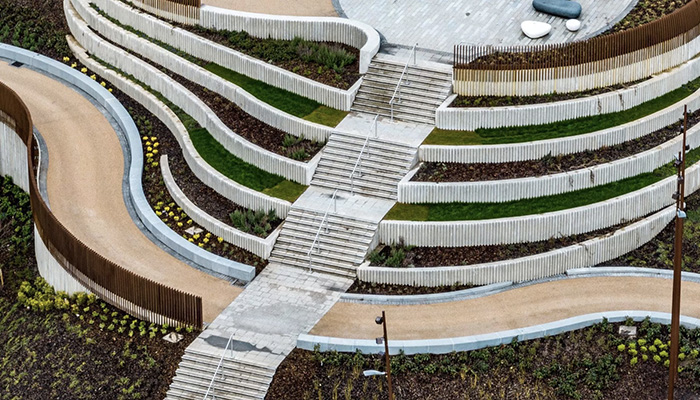A Bridge Incorporating a 3D Printed Concrete Staircase has Been Inaugurated in Scotland

One of the largest 3D printing structure to date in the UK is finally opening. In Glasgow, the Sighthill Bridge has opened over the M8 freeway, one of the busiest roads in Scotland. To clarify, this structure is not entirely 3D printed. In fact, companies BAM and Weber Beamix used 3D printing technology to integrate the concrete staircase into the bridge. The purpose of the project was to connect Glasgow’s city center and the Sighthill neighborhood. The staircase was installed in 2021, however, the city is only celebrating the opening of the bridge recently.
This is not the first time additive manufacturing has been leveraged for bridge construction projects. In fact, the Netherlands has seen a few initiatives where this technology has been used to build these public structures. In the center of Amsterdam, MX3D participated in the creation of a 3D printed bridge. A little further south, in the city of Nijmegen, one of the longest 3D printed bridges for cyclists was inaugurated. This project in particular was also led by BAM and Weber Beamix.

The 3D printed staircase by BAM and Weber Beamix (photo credits: BAM)
Manufacturing the 3D Printed Staircase
BAM provided the 3D printing expertise for the construction of the bridge. Its printer consists of a robotic arm equipped with a nozzle capable of extruding a concrete mortar mixture. This allowed the machine to deposit the material layer by layer, with a thickness of about 5 mm. The company claims that 3D printing the steps allowed for precise shapes that would be complicated to achieve with traditional manufacturing techniques. It’s also known that the technology has helped reduce material (50 percent), as well as waste, by up to 40 percent. “The project has pushed the boundaries of what’s possible within construction, using cutting-edge digital techniques and collaboration from everyone involved. We are proud to leave a sustainable legacy that will benefit the north of Glasgow for years to come”, explains Ian Steele, BAM’s contract manager.
Weber Beamix was the supplier of the concrete. Their unique solution uses the unique characteristics of rheological materials, i.e. products that are resistant to flow and deformation. Once the concrete is placed, it solidifies and bonds with the next layer. According to BAM, each layer should be placed within 10 minutes of the other. Weber Beamix also took care of 3D printing the steps in its factory in the Netherlands. Once designed, the structure was shipped to Scotland. Howeover, for 3D printing fans who would like to see these 3D printed stairs with their own eyes, you may be disappointed. Indeed, following installation, the structure was covered with granite. This provided a non-slip surface for citizens safety.
What do you think about this latest 3D printed construction project? Let us know in a comment below or on our LinkedIn, Facebook, and Twitter pages! Don’t forget to sign up for our free weekly Newsletter here, the latest 3D printing news straight to your inbox! You can also find all our videos on our YouTube channel.
*Cover photo credits: BAM






